moon
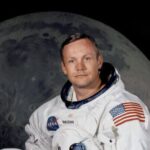
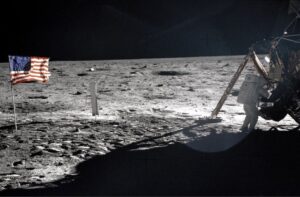 Neil Armstrong made history on July 20, 1969, when he became the first person to step on the moon. That is something we all have known about for a very long time. What we didn’t know about was that the Wright Brothers also made history on the moon. You might wonder how that could be, considering the fact that Orville and Wilber Wright died in 1948 and 1912, respectively. With that many years between their time and the 1969 moon landing, how could the Wright brothers possibly land on the moon. Well, it was simple really. As part of the mission, Armstrong and his team carried small bags of belongings called personal preference kits.
Neil Armstrong made history on July 20, 1969, when he became the first person to step on the moon. That is something we all have known about for a very long time. What we didn’t know about was that the Wright Brothers also made history on the moon. You might wonder how that could be, considering the fact that Orville and Wilber Wright died in 1948 and 1912, respectively. With that many years between their time and the 1969 moon landing, how could the Wright brothers possibly land on the moon. Well, it was simple really. As part of the mission, Armstrong and his team carried small bags of belongings called personal preference kits.
The men were supposed to choose things that had meaning to them and maybe even to the mission they were on. In Armstrong’s bag were souvenirs of another important aircraft… believe it or not, they were parts of the fabric and propeller from the Wright Flyer, flown by Armstrong’s fellow Ohioans, Wilbur and Orville Wright, on December 17, 1903. He must have felt a connection to them since all three of them were from Ohio. Some of those souvenirs remained with Armstrong after the flight to the moon, while some of the others went to the Smithsonian Institution.
In an interesting sidenote, another swatch of fabric from the Wright Flyer went with John Glenn, when he went into orbit aboard the space shuttle Discovery in 1998, and a postage-stamp-size piece has gone to Mars aboard the Ingenuity helicopter. It makes sense that the men who first made flight possible, should somehow have a place in what would have been the future of flight for them, if they were still alive. The Wright brothers started something with that first plane, and it wasn’t just flight. Without that first flight, space travel would never have been possible. They started the ball rolling on an amazing future of space exploration. What mor fitting tribute could there be that to take part of that first plane into space and allow it to land on the moon, mars, or just to be in flight in space at all.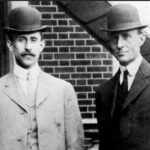
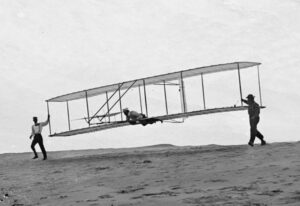
Bringing the Wright brothers into space by proxy was an amazing feat, but there was one other thing that I found odd anyway. When they mission returned home, they actually had to go through customs. That whole thought made me laugh. I mean…what did they think was going to be “smuggled” in, anyway? Nevertheless, going through customs was a requirement, so customs it was.
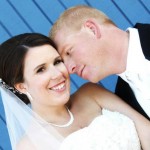
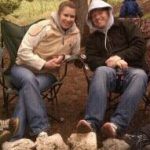 My nephew, Jason Sawdon, is a decorated patrolman for the Wyoming Highway Patrol. It is a position to be very proud of, and while he would never say that he is proud of himself, because he is not that kind of man, we are all proud of him and his work. Still, it is not his position as a patrolman that has endeared Jason to his family.
My nephew, Jason Sawdon, is a decorated patrolman for the Wyoming Highway Patrol. It is a position to be very proud of, and while he would never say that he is proud of himself, because he is not that kind of man, we are all proud of him and his work. Still, it is not his position as a patrolman that has endeared Jason to his family.
Jason is a wonderful husband to my niece, Jessi and an amazing daddy to their daughter, Adelaide. He has such a soft heart when it comes to his girls, and he would gladly give them the moon…if he could reach it. I love seeing him with his girls, because the love he feels for them is evidenced on his face. There is a look that you see on a man’s face when he has found that his life’s dream is sitting right there beside him. It’s as if he almost can’t believe how very blessed his life has become. Of course, his girls feel the same way about Jason. They know that when God gave them Jason, He gave them the best He had. That’s how a match made in Heaven works. God gives each party the person that is the very best for them.
Jason has a great sense of humor and brings much fun and laughter into their home. And of course, his good nature and that of my niece, have made their little Adelaide into a bit of a comic in her own right, With parents 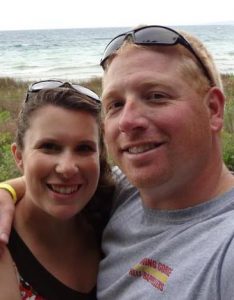
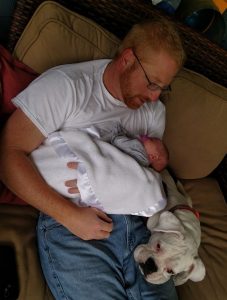 like hers, what else would she be. She has learned from two of the best comics I know.
like hers, what else would she be. She has learned from two of the best comics I know.
All humor aside though, I can honestly say that Jason and Jessi are two people who I feel very blessed to know. They are hard working, talented people, who live life to the fullest. They are involved with their community, and work to make it a better place to live. They aren’t afraid of hard work, and they have made their home a sweet place to raise their family. They love to go camping and hang out with family and friends…especially at the Hadlock place on Casper Mountain. And they love to head back to Michigan to visit Jason’s family there, because family is what it’s all about. Today is Jason’s birthday. Happy birthday Jason!! Have a great day!! We love you!!
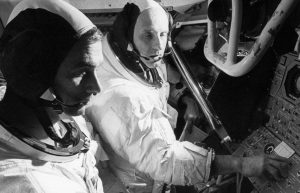 They were a part of an elite group…the men who walked on the moon. They had the privilege of going somewhere that few humans would get to go. It was a small group of just twelve men, but only three of the twelve got to walk on the moon twice, and only Captain Gene Cernan got to be the last human being to leave a footprint on the lunar surface. The final words he spoke on the Moon on December 14, 1972 represented everything the Apollo missions stood for. He said, “We leave as we came and, God willing, as we shall return with peace and hope for all mankind.”
They were a part of an elite group…the men who walked on the moon. They had the privilege of going somewhere that few humans would get to go. It was a small group of just twelve men, but only three of the twelve got to walk on the moon twice, and only Captain Gene Cernan got to be the last human being to leave a footprint on the lunar surface. The final words he spoke on the Moon on December 14, 1972 represented everything the Apollo missions stood for. He said, “We leave as we came and, God willing, as we shall return with peace and hope for all mankind.”
Captain Gene Cernan was the third man to walk in space, one of only three people to go to the Moon twice and the last man to leave a footprint on the lunar surface…the last one!! How amazing is that? Some things are almost to big to imagine, and walking on the moon is one of them for me. The really shocking thing for me is that the last man walked on the moon 45 years ago today…and no human has been there since that day. I wonder how much Captain Cernan has thought about that fact over the last 45 years. I’m sure he has had to tell people about it more times that he 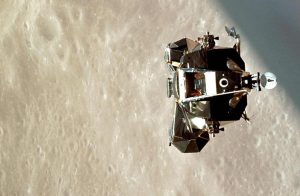 can count, too. I suppose it would be strange to have your whole identity to the world be that you were the last man to set foot on the moon, but then again, I think it might be extremely cool too. Now, consider what his wife was thinking those two times her husband was in space and walking on the moon. Well, she has been quoted as saying, “If you think going to the Moon is hard, you should try staying at home.” Yes, I imagine that would be a tough job too, especially after Apollo 13 almost didn’t make it back to Earth.
can count, too. I suppose it would be strange to have your whole identity to the world be that you were the last man to set foot on the moon, but then again, I think it might be extremely cool too. Now, consider what his wife was thinking those two times her husband was in space and walking on the moon. Well, she has been quoted as saying, “If you think going to the Moon is hard, you should try staying at home.” Yes, I imagine that would be a tough job too, especially after Apollo 13 almost didn’t make it back to Earth.
As for Cernan, he has been said to be sad that the American space program has dwindled into nothing. All the hard work they had done, and all the accomplishments, now seemingly not important. He was quoted as saying, “It was if someone took Columbus’ Santa Maria and said: It’s history – you guys discovered America, let’s take it out and scuttle it. It’s over, you’re not going to go anywhere. To think of what we were capable of doing and now we’ve been told [in a tweet by Russia’s Deputy Prime Minister Dmitry Rogozin] that if we want to go to our own space station, we’d better get a trampoline – that statement hurt. It hurt me personally.” Yes, 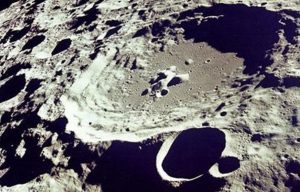 it hurts me too, and I have never been to the moon. So how much did it hurt for those twelve men who walked on the moon…Neil Armstrong – Apollo 11 July 21, 1969, Buzz Aldrin -Apollo 11 July 21st, 1969, Pete Conrad – Apollo 12 November 19-20, 1969, Alan Bean – Apollo 12 November 19-20, 1969, Alan Shepard – Apollo 14 February 5-6, 1971, Edgar Mitchell – Apollo 14 February 5-6, 1971, David Scott – Apollo 15 July 31 August 2, 1971, James Irwin – Apollo 15 July 31 August 2, 1971, John W. Young – Apollo 16 April 21st to 23rd, 1972, Charles Duke – Apollo 16 April 21-23, 1972, Harrison Schmitt – Apollo 17 December 11-14, 1972, and lastly Eugene Cernan – Apollo 17 December 11-14, 1972. It’s like having your life’s work thrown away.
it hurts me too, and I have never been to the moon. So how much did it hurt for those twelve men who walked on the moon…Neil Armstrong – Apollo 11 July 21, 1969, Buzz Aldrin -Apollo 11 July 21st, 1969, Pete Conrad – Apollo 12 November 19-20, 1969, Alan Bean – Apollo 12 November 19-20, 1969, Alan Shepard – Apollo 14 February 5-6, 1971, Edgar Mitchell – Apollo 14 February 5-6, 1971, David Scott – Apollo 15 July 31 August 2, 1971, James Irwin – Apollo 15 July 31 August 2, 1971, John W. Young – Apollo 16 April 21st to 23rd, 1972, Charles Duke – Apollo 16 April 21-23, 1972, Harrison Schmitt – Apollo 17 December 11-14, 1972, and lastly Eugene Cernan – Apollo 17 December 11-14, 1972. It’s like having your life’s work thrown away.
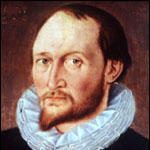 These days, since man has already been on the moon, I don’t suppose the scientists would feel the same excitement about seeing it through a telescope that they felt the first time they looked at it through a telescope. I’m sure that the creation of a map of the moon was an amazing accomplishment back in the 1600s. The earliest known telescope was built in 1608 in the Netherlands when an eyeglass maker named Hans Lippershey tried to obtain a patent on one. Although Lippershey did not receive his patent, news of the new invention soon spread across Europe. The design of these early refracting telescopes consisted of a convex objective lens and a concave eyepiece. The world was headed for a new and exciting journey that would someday put man in space and on the moon.
These days, since man has already been on the moon, I don’t suppose the scientists would feel the same excitement about seeing it through a telescope that they felt the first time they looked at it through a telescope. I’m sure that the creation of a map of the moon was an amazing accomplishment back in the 1600s. The earliest known telescope was built in 1608 in the Netherlands when an eyeglass maker named Hans Lippershey tried to obtain a patent on one. Although Lippershey did not receive his patent, news of the new invention soon spread across Europe. The design of these early refracting telescopes consisted of a convex objective lens and a concave eyepiece. The world was headed for a new and exciting journey that would someday put man in space and on the moon.
Thomas Harriot was a mathematician and astronomer who founded the English School of Algebra. He is described by some as “the greatest mathematician that Oxford has produced,” yet only recently has his name become widely known, and even now his achievements are not fully appreciated by most mathematicians. I’m sure he was an amazing mathematician, but it is his work in astronomy that interests me. As an undergraduate at Oxford, Harriot was a student at St Mary’s Hall. Harriot graduated in 1580 and went to London.
We know from manuscripts, belonging to Harriot, that he was engaged in deep studies of optics at Syon by 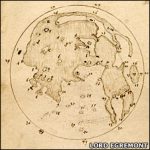 1597. Although in his manuscripts it states that he had discovered the sine law of refraction of light before 1597. The precise date of Harriot’s important discovery was July 1601. As with all his other mathematical discoveries, however, Harriot did not publish his findings. It is somewhat ironic, that Snell…to whom the discovery of this law is now attributed…was not the first to publish the result. Snell’s discovery was in 1621, about 20 years after Harriot’s discovery, but the result was not published until Descartes put it in print in 1637. He considered more complex systems and employed Christopher Tooke as a lens grinder from early 1605. His work on light now moved to the dispersion of light into colors. He began to develop a theory for the rainbow By 1606, Johannes Kepler had heard of the remarkable results on optics achieved by Harriot. Kepler wrote to Harriot, but the correspondence never really achieved any significant exchange of ideas. Perhaps Harriot was too wary of the difficulties that his work had nearly brought on him, or perhaps he did, as he claimed to Kepler, still intend to publish his results.
1597. Although in his manuscripts it states that he had discovered the sine law of refraction of light before 1597. The precise date of Harriot’s important discovery was July 1601. As with all his other mathematical discoveries, however, Harriot did not publish his findings. It is somewhat ironic, that Snell…to whom the discovery of this law is now attributed…was not the first to publish the result. Snell’s discovery was in 1621, about 20 years after Harriot’s discovery, but the result was not published until Descartes put it in print in 1637. He considered more complex systems and employed Christopher Tooke as a lens grinder from early 1605. His work on light now moved to the dispersion of light into colors. He began to develop a theory for the rainbow By 1606, Johannes Kepler had heard of the remarkable results on optics achieved by Harriot. Kepler wrote to Harriot, but the correspondence never really achieved any significant exchange of ideas. Perhaps Harriot was too wary of the difficulties that his work had nearly brought on him, or perhaps he did, as he claimed to Kepler, still intend to publish his results.
The appearance of a comet attracted Harriot’s attention and turned his scientific mind towards astronomy. He observed a comet on September 17, 1607 from Ilfracombe which would later be identified as Halley’s Comet. 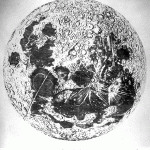 Kepler had discovered the comet six days earlier, but it would be the observations of Harriot and his friend…and student, William Lower which eventually were used by Friedrich Wilhelm Bessel to compute its orbit. His astronomy was now back in the forefront of his mind, and Harriot went on to make the earliest telescopic observations in England. On July 26, 1609 at 9pm, he sketched the Moon, after viewing it through a telescope with a magnification of 6. He sketched the Moon again a year later on July 17, 1610, by this time he had a telescope giving him a magnification of 10. Soon he had constructed a telescope with a magnification of 20, then by April 1611 he had a 32 magnification telescope. While mapping the moon might seem to some like a minor achievement, it inspired him to continuously improve the telescope.
Kepler had discovered the comet six days earlier, but it would be the observations of Harriot and his friend…and student, William Lower which eventually were used by Friedrich Wilhelm Bessel to compute its orbit. His astronomy was now back in the forefront of his mind, and Harriot went on to make the earliest telescopic observations in England. On July 26, 1609 at 9pm, he sketched the Moon, after viewing it through a telescope with a magnification of 6. He sketched the Moon again a year later on July 17, 1610, by this time he had a telescope giving him a magnification of 10. Soon he had constructed a telescope with a magnification of 20, then by April 1611 he had a 32 magnification telescope. While mapping the moon might seem to some like a minor achievement, it inspired him to continuously improve the telescope.
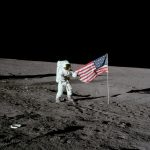 Most people know that at 10:56pm EDT, on July 20, 1969, American astronaut Neil Armstrong, 240,000 miles from Earth, speaks these words to more than a billion people listening at home, “That’s one small step for man, one giant leap for mankind.” Stepping off the lunar landing module Eagle, Armstrong became the first human to walk on the surface of the moon. The moment was historic, in more ways than one. Yes, the United States was the first nation to put a man on the moon. John F Kennedy’s dream had become a reality. On May 25, 1961, Kennedy made his famous appeal to a special joint session of Congress: “I believe this nation should commit itself to achieving the goal, before this decade is out, of landing a man on the moon and returning him safely to Earth.”
Most people know that at 10:56pm EDT, on July 20, 1969, American astronaut Neil Armstrong, 240,000 miles from Earth, speaks these words to more than a billion people listening at home, “That’s one small step for man, one giant leap for mankind.” Stepping off the lunar landing module Eagle, Armstrong became the first human to walk on the surface of the moon. The moment was historic, in more ways than one. Yes, the United States was the first nation to put a man on the moon. John F Kennedy’s dream had become a reality. On May 25, 1961, Kennedy made his famous appeal to a special joint session of Congress: “I believe this nation should commit itself to achieving the goal, before this decade is out, of landing a man on the moon and returning him safely to Earth.”
Most people know the rest of the story, or do they. At that moment, and for the next few moments, Neil Armstrong was the only human to step foot on the moon. He would always be the first human to step foot on the moon, but for a few minutes, he was the only human to do so. “Buzz” Aldrin joined him on the moon’s surface at 11:11pm, so now there were two humans who had walked on the moon, and while that was quite different from Armstrong’s feeling of being the only human to walk on the moon, it was still something so unique that I’m sure it had to be almost mind-boggling. Lots of us have done something that no one else in our  family or social circle has done, and the feeling of accomplishment is almost like a high, but this was something that no other human had ever done. Now that’s a high!! Of course, Armstrong wasn’t the only human to ever experience something like that. Many pioneers in different areas of history did the same thing. The first flight, the first car, the first heart transplant…the list goes on, but all of those had one thing in common. They were done on Earth. Armstrong was the first person to walk on a planet that was not the Earth. No matter how you look at it, this was unique, and Armstrong stood alone among human beings…not only for his accomplishment, but more for where it took place.
family or social circle has done, and the feeling of accomplishment is almost like a high, but this was something that no other human had ever done. Now that’s a high!! Of course, Armstrong wasn’t the only human to ever experience something like that. Many pioneers in different areas of history did the same thing. The first flight, the first car, the first heart transplant…the list goes on, but all of those had one thing in common. They were done on Earth. Armstrong was the first person to walk on a planet that was not the Earth. No matter how you look at it, this was unique, and Armstrong stood alone among human beings…not only for his accomplishment, but more for where it took place.
After “Buzz” Aldrin joined Neil Armstrong on the moon’s surface, they took photographs of the terrain, planted a United States flag on its surface. Then they ran a few simple scientific tests, and spoke with President Richard M Nixon via Houston. By 1:11am on July 21, both astronauts were back in the lunar module and the hatch was closed. The two men slept that night on the surface of the moon. Then, at 1:54pm the Eagle began its ascent back to the command module. Among the items left on the surface of the moon was a plaque that read: “Here men from the planet Earth first set foot on the moon–July 1969 A.D–We came in peace for all mankind.” There would be five more successful lunar landing missions, and one unplanned lunar swing-by, when Apollo 13 experienced a malfunction that nearly made it impossible to return to Earth. The last men to walk on the moon, astronauts Eugene Cernan and Harrison Schmitt of the Apollo 17 mission, left the lunar surface on December 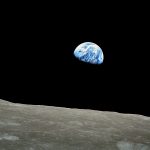 14, 1972. In all, 12 men walked on the moon. All Americans, they were, on Apollo 11: Neil Armstrong (NASA Civilian) and Buzz Aldrin (USAF), on Apollo 12: Pete Conrad (US Navy) and Alan Bean (US Navy), on Apollo 14: Alan Shepard (US Navy) and Edgar Mitchell (US Navy), on Apollo 15: David Scott (USAF) and James Irwin (USAF), on Apollo 16: John Young (US Navy) and Charles Duke (USAF), and on Apollo 17: Gene Cernan (US Navy) and Harrison Schmitt (NASA Civilian). While Neil Armstrong was the only human to walk on the moon’s surface for 15 minutes in time, there were 11 others who had the distinct honor of walking on the moon, and while they weren’t the only humans, they were the only 12 humans to do so, and that had to feel really strange to them for the rest of their lives.
14, 1972. In all, 12 men walked on the moon. All Americans, they were, on Apollo 11: Neil Armstrong (NASA Civilian) and Buzz Aldrin (USAF), on Apollo 12: Pete Conrad (US Navy) and Alan Bean (US Navy), on Apollo 14: Alan Shepard (US Navy) and Edgar Mitchell (US Navy), on Apollo 15: David Scott (USAF) and James Irwin (USAF), on Apollo 16: John Young (US Navy) and Charles Duke (USAF), and on Apollo 17: Gene Cernan (US Navy) and Harrison Schmitt (NASA Civilian). While Neil Armstrong was the only human to walk on the moon’s surface for 15 minutes in time, there were 11 others who had the distinct honor of walking on the moon, and while they weren’t the only humans, they were the only 12 humans to do so, and that had to feel really strange to them for the rest of their lives.
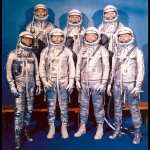 The year was 1959, and things were changing rapidly in the world of flight. Airplanes had been around, and actually flying since the December 17, 1903 flight of the Kitty Hawk by the Wright brothers. Air travel, while not as common as it is today, was fairly common. Now, it was time for the next step. We had looked through telescopes, found the planets, their moons, and other suns. We discovered galaxies beyond our own, and then, someone…somewhere, decided that it was time for mankind to go out there and have a look for ourselves.
The year was 1959, and things were changing rapidly in the world of flight. Airplanes had been around, and actually flying since the December 17, 1903 flight of the Kitty Hawk by the Wright brothers. Air travel, while not as common as it is today, was fairly common. Now, it was time for the next step. We had looked through telescopes, found the planets, their moons, and other suns. We discovered galaxies beyond our own, and then, someone…somewhere, decided that it was time for mankind to go out there and have a look for ourselves.
By late 1958 plans were well underway to take that first step. Seven men were picked, and on this day April 9, 1959 NASA announced that they had decided on the first seven astronauts, who would take that very first space flight. The men were dubbed The Mercury Seven, but were also called the Original Seven or Astronaut Group 1. The men were Scott Carpenter, Gordon Cooper, John Glenn, Gus Grissom, Wally Schirra, Alan Shepard, and Deke Slayton. They piloted the manned spaceflights of the Mercury program from May 1961 to May 1963. They weren’t the first men in space, but they were the first from the United States. The first human to journey into outer space, was Yuri Gagarin, when his Vostok spacecraft completed an orbit of the Earth on 12 April 1961. Alan Shepard became the first American in space 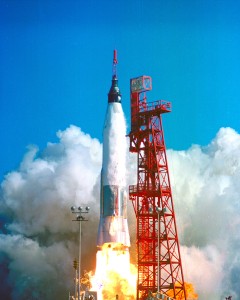 when the Freedom 7 spacecraft blasted off from Florida on May 5, 1961, just under a month after the Russian flight. Ten years later, Shepard would fly again to become the fifth man to walk on the moon…and the first to play golf there.
when the Freedom 7 spacecraft blasted off from Florida on May 5, 1961, just under a month after the Russian flight. Ten years later, Shepard would fly again to become the fifth man to walk on the moon…and the first to play golf there.
Most of these seven men went on to fly in many successful missions, with Gus Grissom being the only one to die young and on duty with NASA, in the Apollo 1 fire. Members of the group flew on all classes of NASA manned orbital spacecraft of the 20th century…Mercury, Gemini, Apollo, and the Space Shuttle. John Glenn, the oldest, is the only one who is still living. He went on to become a United States senator, and flew on the Shuttle 36 years later to become the oldest person to fly in space. The others all survived past retirement from service. These men played a key part in the world as we know it today, because space travel has played a key part in many of our modern medicines and scientific research. And it all began on this day in 1959.
 Over the centuries, we have seen many changes in how people preserved their images in picture. From the days of hieroglyphics to the days of digital photography, much has changed in the world of what we now call photography. In fact, many people these day never print a photograph at all, they simply view it, share it, and save it online. Such was not always the case. It use to be that to have a picture taken was an expensive venture, and one that was not done often. Then as photography became more and more common, pictures became a common thing. These days with digital cameras, taking pictures is commonplace, and people even take selfies because they can, and it’s something new and fun.
Over the centuries, we have seen many changes in how people preserved their images in picture. From the days of hieroglyphics to the days of digital photography, much has changed in the world of what we now call photography. In fact, many people these day never print a photograph at all, they simply view it, share it, and save it online. Such was not always the case. It use to be that to have a picture taken was an expensive venture, and one that was not done often. Then as photography became more and more common, pictures became a common thing. These days with digital cameras, taking pictures is commonplace, and people even take selfies because they can, and it’s something new and fun.
The original cameras were big, bulky, and expensive. One avid photographer, George Eastman wanted to bring the world of photography to the masses. George worked on his project until he perfected a Kodak camera that 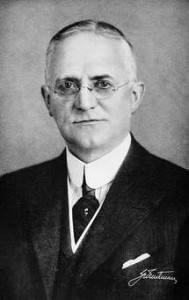 used a roll of dry, transparent, and flexible, photographic film, which he had also invented. That was on September 4, 1888, and both cameras and film…or the lack thereof, have come a long way since then. Still, it is men like George Eastman who had a dream to bring photography into the hands of the masses, who paved the way for the amazing abilities we have today. To me, pictures are gold…pure gold. They tell of at time we couldn’t have known about. All we have is the stories that history has told, and the pictures to show us what it was like.
used a roll of dry, transparent, and flexible, photographic film, which he had also invented. That was on September 4, 1888, and both cameras and film…or the lack thereof, have come a long way since then. Still, it is men like George Eastman who had a dream to bring photography into the hands of the masses, who paved the way for the amazing abilities we have today. To me, pictures are gold…pure gold. They tell of at time we couldn’t have known about. All we have is the stories that history has told, and the pictures to show us what it was like.
In 1883, Eastman announced the invention of photographic film in rolls, but he had no way to use it then. Kodak the company was born in 1888 when the first Kodak camera entered the market. The camera came the Kodak camera could easily be carried and handheld during its operation. The camera came pre-loaded with enough film to take 100 pictures. “You press the button, we do the rest” promised George Eastman in 1888 with this advertising slogan for his Kodak camera. George Eastman wanted to simplify photography and make it available to everyone, not just trained photographers. He had a dream. He knew that there was no reason that everyone could not be a photographer. All that was needed was the right equipment. After the shots in the new camera were taken, the whole camera was returned to the Kodak company in Rochester, New York. There, the film was developed, prints were made, and new film was 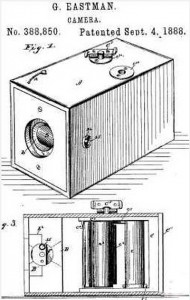 inserted. Then the camera and prints were returned to the customer, so they could take more pictures.
inserted. Then the camera and prints were returned to the customer, so they could take more pictures.
I have to think that this was considered such an amazing invention. I can picture just how excited everyone was. It must have felt like we felt when men walked on the moon for the first time. Like something out of this world. Or maybe that is just the way I would have felt if I were the me of today, seeing the amazing new technology of that day. I think George Eastman must have been an amazing man of incredible vision. So many memories have been preserved because of him. George Eastman was one of the first American industrialists to employ a full-time research scientist. He wanted the best people to do the job. Later, Eastman and his associate would perfected the first commercial transparent roll film which made possible Thomas Edison’s motion picture camera in 1891. It’s funny that something that changed so many things in our world, is now almost obsolete. Digital cameras have replaced all that, and now we are able to save our memories in a whole new way. It was George Eastman who paved the way.
 Over the years, I have watched my niece, Jenny Spethman grow in so many ways. Of course, I’ve seen her grow from a little girl into a teenager, adult, wife, and mother, but those are simply the normal changes we all go through in life. Jenny has changed in so many other, more important ways though. Growth can take on very different and complicated forms, but the greatest growth is in the area of the spiritual, and it is in that area that I find Jenny to have almost literally exploded. I have watched her faith in God grow by leaps and bounds.
Over the years, I have watched my niece, Jenny Spethman grow in so many ways. Of course, I’ve seen her grow from a little girl into a teenager, adult, wife, and mother, but those are simply the normal changes we all go through in life. Jenny has changed in so many other, more important ways though. Growth can take on very different and complicated forms, but the greatest growth is in the area of the spiritual, and it is in that area that I find Jenny to have almost literally exploded. I have watched her faith in God grow by leaps and bounds.
Life has not always been easy for Jenny. She has had her share of heartaches, as those who know her can attest, but through it all, she and her husband, Steve Spethman have never faltered on one thing…their faith in God. When people lose a child, often the first thing that is questioned is to ask God why He did this, but not Jenny and Steve. They knew that this was not God. 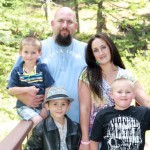 And they then doubled their focus on God’s word, and his promise that they will see their baby girl, Laila in Heaven, and until then, she is in the arms of Jesus and enjoying time with family who have also gone on to Heaven. Jenny and Steve have been blessed with their three sons, Xander, Zack, and Isaac, as well as their daughters, Laila, and now Aleesia, who is almost 2½ years old. Every day is viewed as a blessing beyond measure, even though they miss Laila terribly.
And they then doubled their focus on God’s word, and his promise that they will see their baby girl, Laila in Heaven, and until then, she is in the arms of Jesus and enjoying time with family who have also gone on to Heaven. Jenny and Steve have been blessed with their three sons, Xander, Zack, and Isaac, as well as their daughters, Laila, and now Aleesia, who is almost 2½ years old. Every day is viewed as a blessing beyond measure, even though they miss Laila terribly.
I had really never thought of Jenny as a morning person, although I don’t know why, but these days, at least, she cherishes the early morning hours, as a time to see God’s great sunrises and reflect on His teachings and promises to her. She also loves to see the moon and stars, again because she knows that God has blessed her life with such enormous beauty. I think that it is in these quiet moments of reflection, often before her family 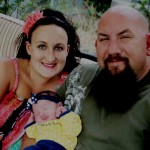 wakes up, that Jenny has grown closer and closer to God. She knows that He is not only her Father, Lord, and Saviour, but in all reality, her Daddy and friend. A friend that sticks closer that all others, and no matter what life brings her.
wakes up, that Jenny has grown closer and closer to God. She knows that He is not only her Father, Lord, and Saviour, but in all reality, her Daddy and friend. A friend that sticks closer that all others, and no matter what life brings her.
Jenny has grown in so many ways, and each area of growth has made her a more and more beautiful person, both inside and out. I am so proud of her and all that she has become. I look forward to the time to come when I will see her grow even more, especially in her walk with the Lord. Today is Jenny’s birthday. You are an amazing woman, and one I am proud to call my niece. Happy birthday Jenny!! Have a great day!! We love you!!

